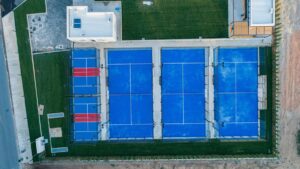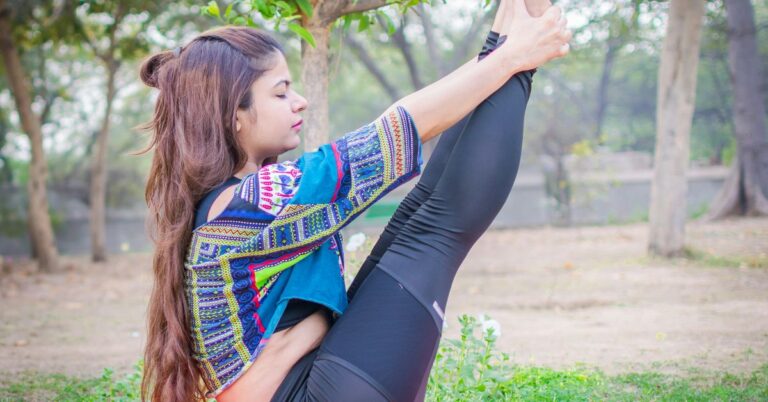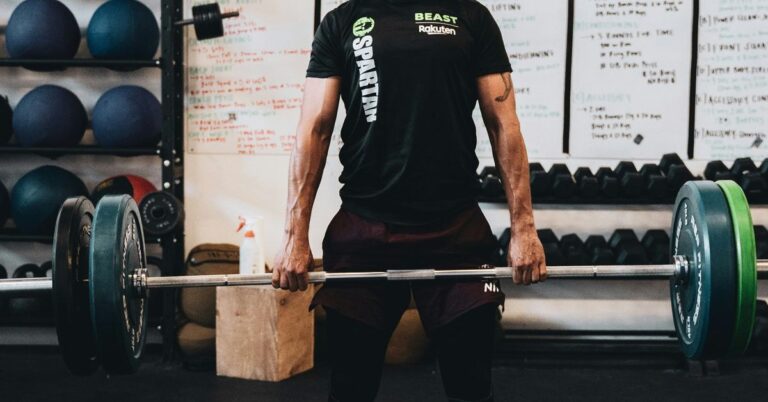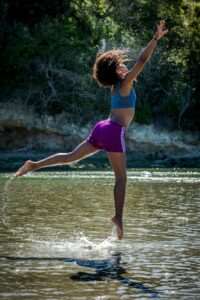Elevate Your Game with These Unconventional Training Techniques
When it comes to sports training, the classics often reign supreme. Coaches will preach the importance of strength training, cardiovascular conditioning, and skill drills until the cows come home. But what if I told you that some of the most effective methods to enhance your athletic performance might be hiding in plain sight? Spoiler alert: they don’t involve lifting heavy weights or running endless laps. Instead, they lean on creativity, mental fortitude, and a dash of whimsy. Buckle up, because we’re about to explore some unconventional training techniques that can elevate your game.
The Power of Visualization
Let’s kick things off with a technique that’s been around for decades but still feels a bit mystical—visualization. Now, I remember being a kid and thinking it was all a bunch of fluff. Picture this: I was sitting in my high school gym, daydreaming about dunking a basketball like Michael Jordan. Back then, I didn’t realize I was actually practicing one of the most powerful tools in an athlete’s arsenal.
Visualization involves creating a mental image of the actions you want to perform, and it has been shown to improve performance in various sports. According to sports psychologist Dr. Richard Suinn, mental imagery can enhance your skills and boost your confidence. Studies suggest that athletes who regularly use visualization techniques often experience significant improvements in their performance.
How can you implement this? Start by finding a quiet space where you can focus. Close your eyes and imagine yourself executing your sport perfectly—whether it’s nailing that free throw or sprinting to the finish line. Feel the adrenaline, hear the crowd, and see yourself succeed. Research indicates that even a few minutes of this practice daily can lead to better outcomes during actual performance.
Animal Flow: Move Like a Beast
Next up, let’s talk about something that might make you feel a bit silly at first: Animal Flow. This unconventional workout mimics the movements of animals and encourages you to engage your body in a wholly different way. Picture yourself crawling like a bear or jumping like a frog—yes, it sounds absurd, but hear me out.
Animal Flow is designed to improve mobility, strength, and coordination. It combines elements from various disciplines like breakdancing, parkour, and traditional bodyweight exercises, all while tapping into our primal instincts (and, let’s be honest, the inner child in all of us). Trainers who incorporate Animal Flow into their routines report that it not only enhances physical performance but also adds a bit of fun to the grind.
Here’s how to get started: Find a soft surface, like a gym mat or grassy patch, and start moving! Begin with basic movements like the “beast crawl” (think of a bear on all fours) and “crab reach” (like a crab scuttling sideways). Sure, you might feel a little odd at first, but it’s a great way to engage your entire body and develop functional strength.
Play Like a Kid: The Art of Playful Training
Remember when you were a kid and training felt like play? Running around, jumping off things, and just having a blast? As we grow older, we often forget the importance of play in our training routines. However, many elite athletes swear by playful training techniques to keep their spirits high and their performance sharp.
Incorporating playful elements into your training doesn’t just make it more enjoyable—it can also lead to unexpected gains. Think about it: when you’re having fun, you’re likely to push yourself harder and stay committed for longer periods. It’s like the secret sauce for motivation!
Here are a few playful training ideas to consider:
- Obstacle Courses: Set up a mini obstacle course in your backyard or local park. Incorporating elements like hurdles, cones, and even a splash of creativity can make training feel like a game.
- Tag Games: Engage friends or teammates in games of tag—while it sounds simple, sprinting and dodging will enhance your agility and cardiovascular fitness.
- Balance Games: Try standing on one leg while tossing a ball back and forth with a partner. It’s a fun way to improve your balance and coordination.
Breath Control: The Art of Relaxation
Who would’ve thought breathing could be a game-changer? Yet, breath control is an often-overlooked aspect of athletic training that can lead to significant improvements in performance. Athletes often get caught up in the adrenaline rush of competition, forgetting the simple act of breathing.
Utilizing techniques like diaphragmatic breathing and box breathing can help you manage anxiety, increase lung capacity, and improve focus. In competitive sports, the ability to remain calm under pressure can be the difference between winning and losing. I remember talking to a seasoned runner who swore that practicing controlled breathing before races transformed his performance. “I’m not just running; I’m floating,” he joked, but the truth was in the results.
To practice breath control, start with a simple exercise. Sit or lie down in a comfortable position. Inhale deeply through your nose for a count of four, hold for four, exhale through your mouth for four, and wait for another four before inhaling again. Repeat this cycle for five to ten minutes. Over time, you’ll likely find that your ability to focus and manage stress improves dramatically.
Mobility Training: A Flexible Approach
Let’s face it, flexibility is often an afterthought in most training regimens. Yet, mobility training can be a game-changer, particularly as you age. It’s not just about touching your toes; it’s about maintaining a full range of motion and preventing injuries. As we age, our muscles and joints can become stiff, which is about as fun as watching paint dry.
Incorporating mobility exercises into your routine can enhance your performance across the board. From yoga and dynamic stretching to self-myofascial release techniques (fancy term for foam rolling), there are numerous ways to keep your body limber. Athletes like basketball players and footballers have begun to adopt these practices, often reporting significant improvements in their performance and recovery times.
Here’s a quick mobility routine you can try at home:
- Cat-Cow Stretch: A great way to loosen up the spine.
- Lunging Hip Flexor Stretch: Helps combat tight hips from sitting too long.
- Shoulder Dislocates: Use a resistance band to improve shoulder mobility.
Incorporating Dance into Training
Now, this one might make you chuckle, but hear me out: dancing can be an incredible addition to your training regime. Whether it’s salsa, hip-hop, or ballet, moving to the rhythm can enhance your coordination, balance, and cardiovascular fitness.
Dance workouts often feel less like training and more like a party, which is why they attract such a diverse crowd. Many professional athletes have incorporated dance into their routines, claiming it not only helps with fitness but also improves their overall athletic grace. Just imagine a linebacker busting out the moonwalk—hilarious, right? But there’s serious merit to it.
To get started, check out local dance classes or online tutorials. You don’t need to be a professional—just embrace the joy of movement! Plus, you might discover a hidden talent (or at least some impressive dance moves for the next wedding you attend).
Cold Water Immersion: The Chill Factor
Ah, the age-old question: to ice bath or not to ice bath? Cold water immersion has gained popularity among athletes for its purported recovery benefits. Although it seems like a modern trend, the practice dates back centuries, with ancient civilizations using cold water as a healing method. I still chuckle at the first time I jumped into an ice bath—my body practically screamed in protest! But the subsequent recovery benefits were undeniable.
The science behind cold water immersion suggests that it can reduce muscle soreness and inflammation, allowing athletes to bounce back quicker from intense workouts. While more research is needed, many athletes swear by it. It’s not just a physical challenge; it’s a mental one too. If you can endure a few minutes in icy waters, you can probably tackle that next workout with a bit more grit.
To try this technique, start with a cold shower and gradually work your way up to an ice bath. Just remember to breathe—panic won’t help you here!
Journaling: The Mental Game
In the hustle and bustle of training, it’s easy to overlook the mental side of sports. Athletes often focus solely on physical training, but the power of journaling can be a game-changer. Keeping a training journal allows you to reflect on your progress, set goals, and document your feelings about your training and competitions.
As a kid, I always thought journaling was just for teenage angst, but I quickly learned that it can serve a far greater purpose. Writing down your thoughts can help clarify your motivations and track your development over time. Studies suggest that athletes who journal often report increased focus and improved performance.
Start by jotting down your daily training sessions, noting what went well and what didn’t. Include your feelings about each session and any goals you might have. You might be surprised at how much you learn about yourself as you go!
Cross-Training: Mixing It Up
Let’s talk about cross-training—a fancy term for diversifying your workout routine. Many athletes become so focused on their specific sport that they neglect other forms of exercise. But cross-training can help prevent injuries and improve overall performance. The key here is to engage different muscle groups while building endurance and strength.
I remember a soccer player who took up swimming during the off-season. Initially, he thought it would be a leisurely endeavor, but he found that swimming not only improved his cardiovascular fitness but also enhanced his flexibility. The changes he saw on the field were remarkable—he was quicker on his feet and more agile than ever before.
Here’s a quick list of cross-training options for different sports:
- Running: Try cycling or swimming to enhance your endurance without pounding your joints.
- Basketball: Incorporate yoga for greater flexibility and balance.
- Weightlifting: Go for a hike to build endurance and enjoy nature.
Conclusion: Embrace the Unconventional
So there you have it—an array of unconventional training techniques that could elevate your game. The beauty of these methods lies in their diversity; they challenge you in unique ways and encourage you to step outside your comfort zone. Whether you’re visualizing your success, crawling like a bear, or taking a refreshing plunge into cold water, every little bit can contribute to your overall performance.
Of course, it’s essential to remember that what works for one athlete might not work for another. Don’t be afraid to experiment with these techniques and see what resonates with you. Just like in life, the key to success in sports often lies in adaptability and a willingness to try new things. So, go ahead and shake up your training routine—you might just surprise yourself.
In the end, elevating your game is about more than just the physical aspects; it’s about nurturing your mental and emotional strengths too. So lace up those sneakers, channel your inner child, and get ready for a wild and rewarding ride!













